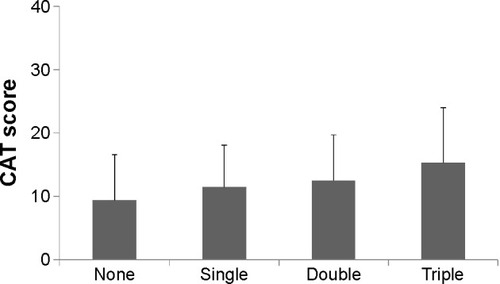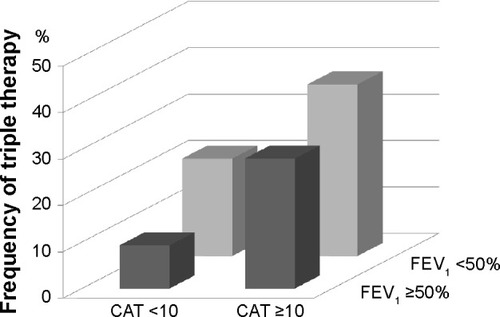Figures & data
Table 1 Characteristics of the study populations
Table 2 Breakdown of drugs in single, double, or triple therapy
Table 3 Number of patients on none, single, double, or triple therapy in the groups based on GOLD spirometric grading
Figure 1 Reasons for triple therapy in GOLD Grade I, Grade II, Grade III, and Grade IV.
Abbreviations: GOLD, Global initiative for chronic Obstructive Lung Disease; LAMA, long-acting muscarinic antagonist; COPD, chronic obstructive pulmonary disease; ICS, inhaled corticosteroids; LABA, long-acting β2 agonist.

Figure 2 Comparison of CAT scores in GOLD Grade II patients according to the number of inhaled medications.
Abbreviations: CAT, COPD Assessment Test; GOLD, Global initiative for chronic Obstructive Lung Disease.

Figure 3 Comparison of the frequency of triple therapy using the GOLD 2011 classification.
Abbreviations: GOLD, Global initiative for chronic Obstructive Lung Disease; FEV1, forced expiratory volume in 1 second; CAT, COPD Assessment Test.

Figure 4 Comparison of the frequency of triple therapy among the groups divided by LAA% on quantitative CT analysis.
Abbreviations: LAA, low-attenuation area; CT, computed tomography.

